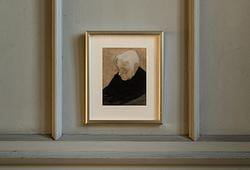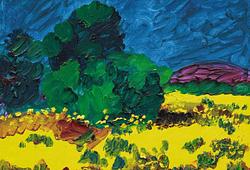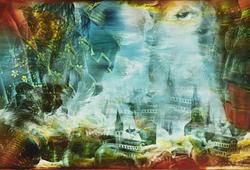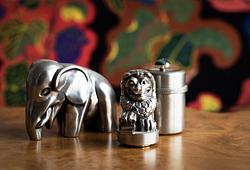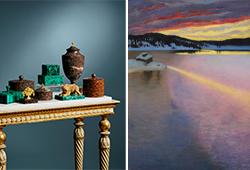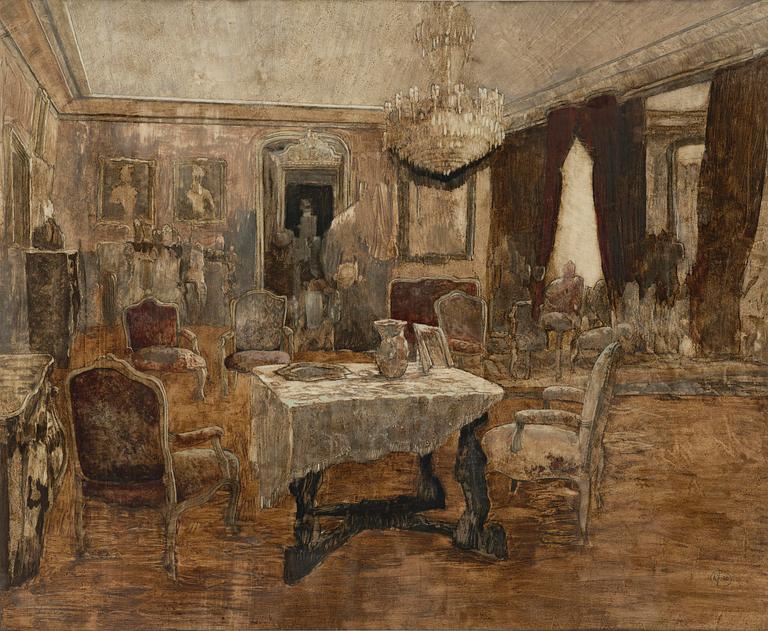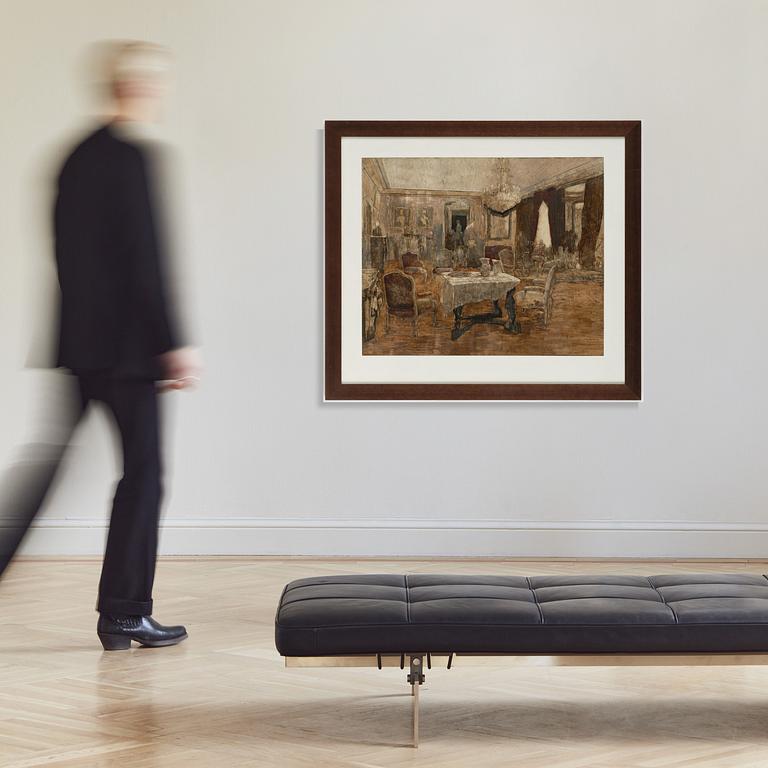Roj Friberg
”Arvfurstens palats”
Signed Rf and dated -00. Mixed media on paper 87 x 106 cm.
Literature
Roj Friberg, Crispin Ahlström och Gunnar D. Hansson, "Roj Friberg", 1990, cf p. 48.
Roj Friberg och Poul Anker Bech, "Roj Friberg", 2000, illustrated p. 10-11.
Lars Nygren,"Roj Friberg", 2010, illustrated p. 110.
More information
Over his career, Roj Friberg has experimented with techniques: mixing graphic art, surrealist and realistic imagery, using unconventional tools (e.g. dental drills), and developing a technique he called 'lacklavering', where he would apply layers of lacquer, then score or carve into the surface and add pigments.
Friberg's work is often noted for its juxtaposition of beauty and decay. His imagery may evoke dreamlike or nightmarish landscapes, ruin, derelict interiors, grotesque human forms, or stark industrial motifs. His works can be somber, even apocalyptic, but there is also a romantic sensibility—seeing beauty even in decay.
Roj Friberg has been inspired by the interiors of the Swedish 18th century palace "Arvfurstens palats" for the work in this auction. He has depicted one of the elegant reception rooms in the palace. True to Friberg's style the room seems to be recently and mysteriously deserted The furniture is in disorder, armchairs scattered around the room. Even the tablecloth appears to be on it's way to slide off the table.
The palace, located close to the Royal Palace in Stockholm was built between 1783 and 1794 for Princess Sofia Albertina, sister of King Gustav III. The interiors were created by Louis Masreliez, and the architect behind the building was Erik Palmstedt. The palace has been used as the official offices of the Swedish Ministry for Foreign Affairs since 1906.
Artist
Roj Friberg was born in Uddevalla, he began his artistic career while studying at the School of Arts and Crafts in Gothenburg to later continue at Valand Academy from 1961 to 64. Friberg uses several distinctive techniques. He mixes graphics, drawing, painting. He utilises unconventional tools such as dentist drills. His works can be executed on specially prepared canvases, such as lacquered or etched ones. His visual world is both strongly realistic and dream-like. For a period of time his choice of motifs were relatively political and "alltogether protest-base", such as his famous work "Juntan" from the 1970s. Roj Friberg is represented in several of Sweden's greatest museums and has even done several charitable projects, such as at Östra Sjukhuset in Gothernburg.
Read more



